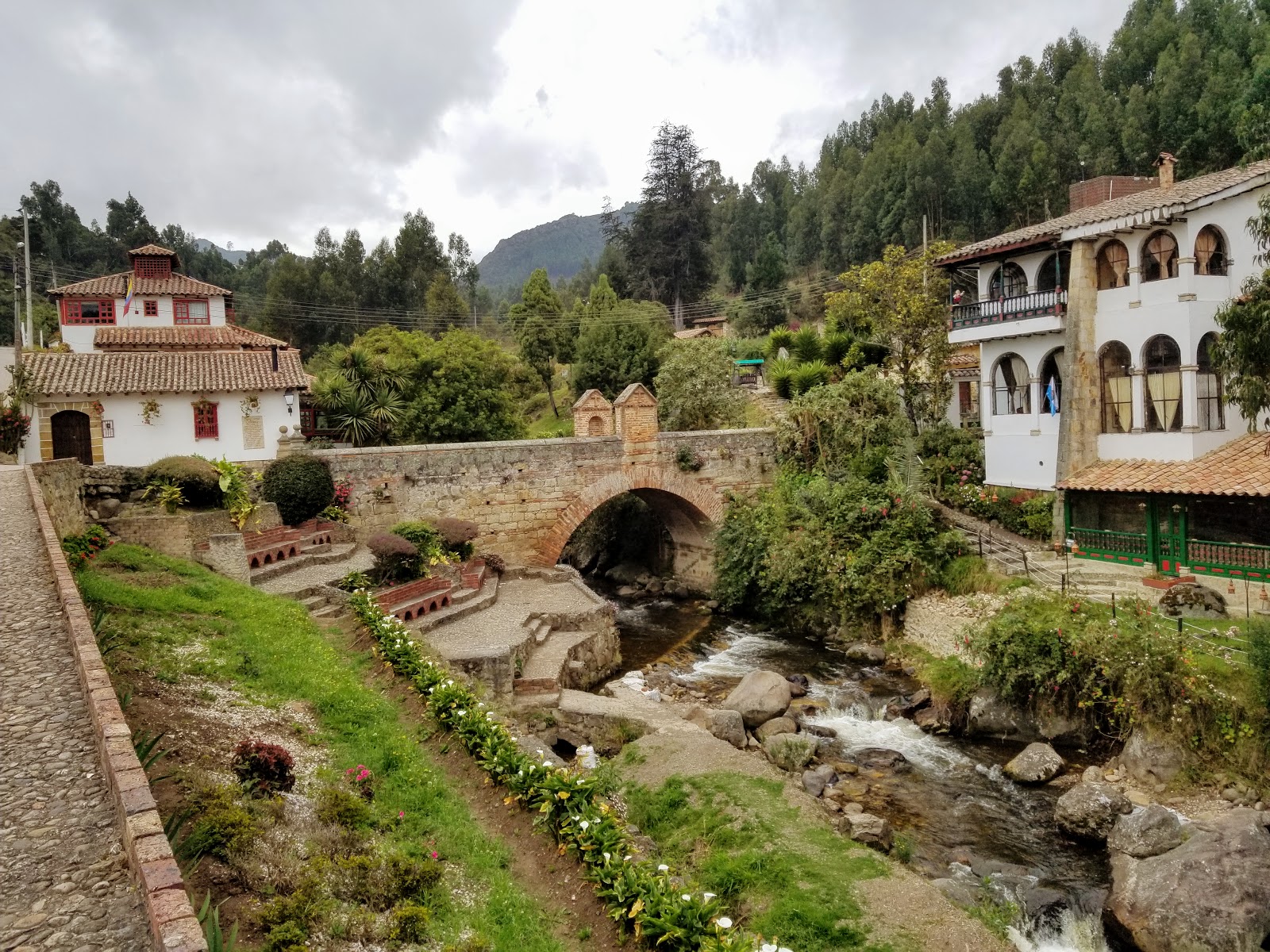Day 70 (September 6, 2018) - Monguí and Iza, Colombia
We wanted to break up the long trip from El Cocuy back to
Bogotá, so we spent a couple days each in Monguí and Iza. Similar to El Cocuy,
these are small towns with a very strong country village vibe. In theory, these
towns should be a lot more touristed than the very far-flung El Cocuy, but during
our stay we still managed to rarely find other visitors.
 |
| Locals heading into the town of Monguí. |
Both villages are located on hilly countryside. You’ve
never more than a few feet away from a cow or a horse. In fact, you’re just as
likely to see a cow or horse in the street as you are a car. While there are
restaurants, there are no menus. You either eat what they made for the day or you
may be given a choice between a few different proteins to accompany the otherwise
set menu. The food was quite good through and a huge improvement over El Cocuy. At night
the town smells of campfire as households burn wood for cooking. The stars
can also be quite impressive, if the clouds ever manage to part.
 |
| The Christmas-colored buildings in Monguí. |
 |
| Horse parking in Monguí. |
Colombia is full of these cute villages. Each is
remarkable in that the buildings of any small town always manage to match one
another in some kind of color scheme. All the buildings in El Cocuy are white
and asparagus green, those in Mongí are of a Christmas theme in white,
pine green, red, and gold, while those in Iza are in a very stately white, dark
green, and brown.
 |
| The countryside that surrounds Monguí. A bit of rain out there too. |
There isn’t really anything to do in these towns. You can
walk their entirely in about an hour. They are, however, nice places to relax.
We spent time making travel plans, catching up on the blog, and trying to find some
good cups of coffee. Iza is known for a special type of dessert, which is
basically a custard that you can get in a multitude of different flavors. We
each tried a couple different flavors. Of my selection, one was really quite
terrible but the other was pretty good. It’s extremely filling though. Not sure
I would travel all the way out there just for their dessert.
 |
| The central square of Iza. |
 |
| The white and brown buildings of Iza. |
We were always running out of small bills to pay for
things. There are no ATMs and no one in town ever seemed to have change, but everyone is so
ridiculously nice and helpful that as soon as they figure out they can’t make change
they will literally run all over town trying to find someone to help. When
buying our desserts in Iza, the girl who sold them to us managed to find a truck
driver who had change. When paying for a coffee at another place in town, the
owners finally found change after running around to four or five other stores. So
when you try to pay for something in these small towns and they quickly run out
of the store with your bill in hand, they are not stealing it from you, but rather
trying to get you your change as quickly as possible by finding someone in town
who can help.
 |
| The food in Iza was significantly more flavorful than in El Cocuy. |
While in Iza, we took a bus up the mountains to Lake Tota, the largest lake in Colombia. It also claims to have the highest white sand beach in the world, sitting at just under 10,000 feet in elevation. Regardless if the claim is true or not, there is indeed a white sand beach, but the air is too cold for me to ever want to go in it. We walked around the lake for a bit, had lunch at a cute restaurant where we had their famous Lake Tota trout, and then called it a day and went back to Iza. Next on our trip we were headed back to Bogotá for a couple days before catching a flight onward to Medellin.
 |
| The dogs appeared to be enjoying themselves on the white sand beach of Lake Tota more than the people. |
 |
| Lake Tota looks so inviting, but the cold breeze off the water kept us out. |










Comments
Post a Comment